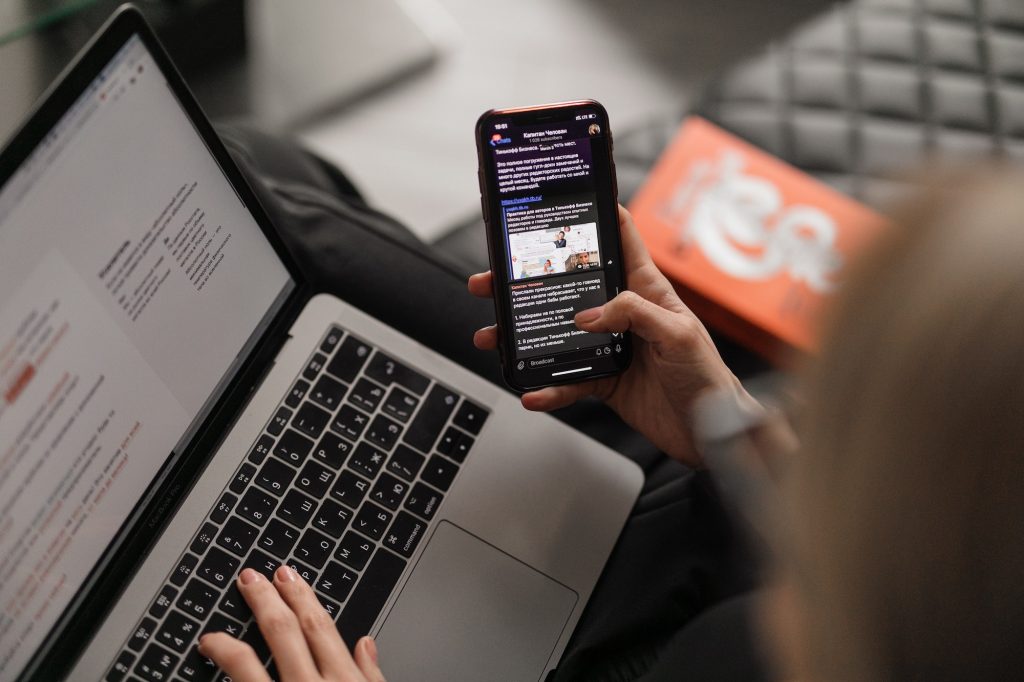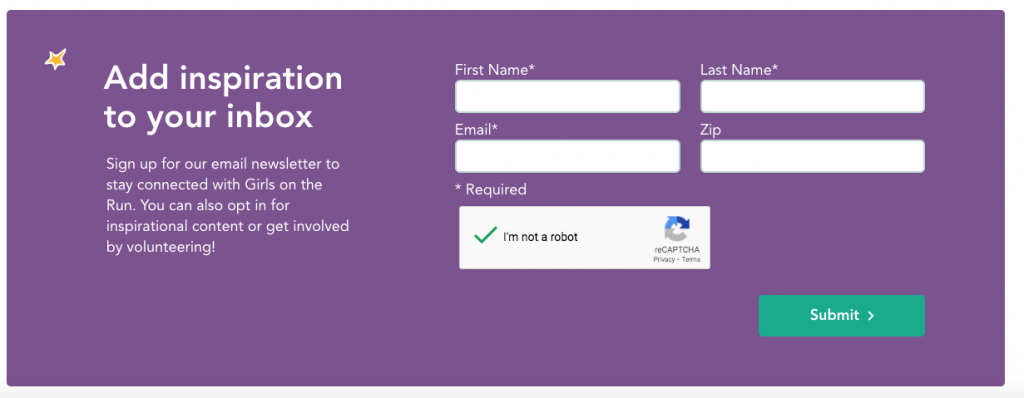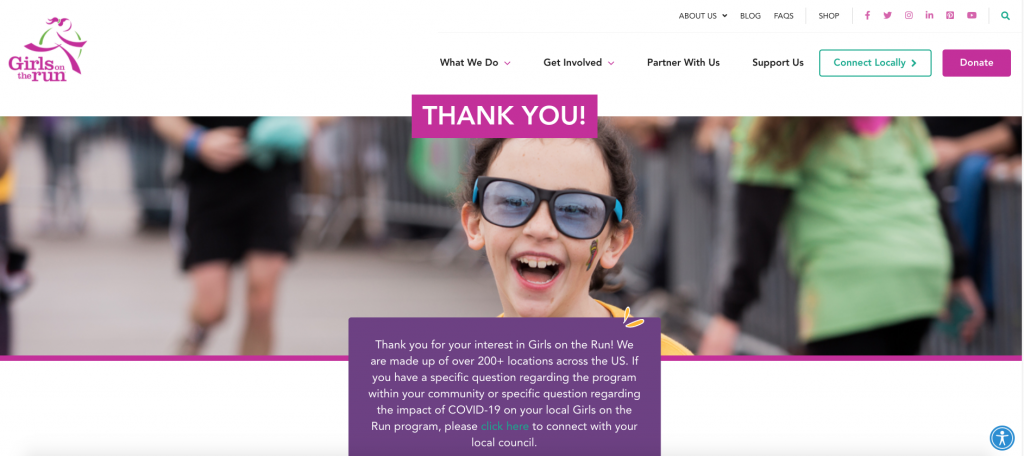
In the Simple Development Systems’ donor communications model, we’ve always recommended both a print and an e-newsletter. And there’s a reason for that.
Your print newsletter serves as a stewardship device, one where you share your donor’s impact and simply make them feel good about their support. When done well, your print newsletter can be an additional source of revenue that can generate as much — if not more — than a fundraising appeal.
As part of your consistent donor communications, an e-newsletter is a good thing. It keeps supporters and prospective supporters regularly updated and contributes to maintaining an active list of email addresses.
Remember though, as an outright revenue device though, nothing comes close to print.
What are the basics of a good nonprofit e-newsletter?
Your Goals
When planning or redesigning your newsletter, consider your overall objectives. Are your goals:
- to keep your supporters informed about the impact of their gift
- to drive traffic to your website
- to build relationships with your supporters
- to promote your organization’s events or activities
- to take action (sign a petition, engage on social media, volunteer, read your blog, donate, other)
Your Audience
Begin with your audience. Your newsletter signup should be easy to find on every page of your organization’s website.
Every page? Yes, every page.
Always consider WIIFM ( “What’s in it for me?”) and give prospective subscribers a compelling reason to opt into your email list.
Important: you’ll want to ask for the first name in addition to the email address so you can begin personalizing right away.
One of the smartest and easiest ways to acquire new names is by offering something of value to them — a guide, a resource, or even a *free* class consisting of more than one email (ideal as it will condition your subscriber to receive regular emails from you). Consider implementing one or two solid list-building activities a year, like this one from Children’s Medical Center. Is there an organization you could partner with, as Feeding America did with Mother Jones?
Once someone has signed up to receive emails from your organization, they need to know what’s going to happen next. This example tells me nothing. When will I hear from you? How often? What kind of communication will I be receiving?
 On their home page, Girls on the Run demonstrates a clear opt-in form and inspiring thank you redirect page.
On their home page, Girls on the Run demonstrates a clear opt-in form and inspiring thank you redirect page.


Craft your follow-up with care, beginning with your thank you redirect page. Is a simple “thank you for subscribing” on the opt-in form good enough? Welllll, yes, but you’re better than “good enough.” Take that extra step of crafting a redirect page that lets your new subscribers know what and when they’ll hear from you. You never want your new subscriber to feel like they’ve ended up in a black hole.
And when it comes to your welcome email, steer clear of the suggested canned responses suggested by your email service provider. Spend some time on your welcome email. Consider testing an email welcome series. The initial work you do here can result in greater engagement, much sooner. For a how-to on crafting your welcome email, check out this episode of MotivateMonday featuring copywriter Julie Cooper. Or download this free guide to writing your email welcome.
Never ever add names to your database to receive your newsletter.
Remember, your job is to attract support…not push your organization on others. The Simple Development Systems’ model is explicitly permission-based. After all, you want to attract like-minded supporters to your mission, not force yourself upon them.
Consistency
How often should you publish? To establish trust, I recommend bi-weekly. Monthly as a last resort. I’ve signed up for hundreds of emails from nonprofit organizations. And I’ve received nothing from hundreds of the organizations I’ve signed up with…until end-of-year fundraising rolls around. When that happens, your ask looks like spam in my inbox.
How often should you send? Again, consistency is your friend. You may pick a day and time that has special meaning for your organization. Perhaps you’ve noticed that you have better open rates on certain days of the week. The Coalition for Sonoran Desert Protection sends a weekly enewsletter every Friday at roughly 5:30ish EST. Their user-generated content, beautiful photography, inspirational quotes, and poetry combine to make a perfect ending to what may have been a tough week. Steer clear of “Best days/times to send email” posts and find the timing that works for your mission.
Create communications that are a joy to read. Don’t ever let me forget that I opted in to receive communications from you.
What to Include
Create a communications calendar for the year, one that includes the dates for your fundraising appeals, your monthly giving asks, your annual report, print newsletters, and more. What kind of theme can carry over from one communication to the next? Download our Annual Fundraising & Marketing Calendar to stay on top of important dates.
Include one success story (no more) with the focus, always, on how your donor’s support made it happen. Repurpose, repurpose, repurpose. You may be tired of a story, but chances are good that it’s new to your donor. The story you use in your May e-news can be used in your April fundraising campaign. Consider serializing your stories to keep your readers hungry for the next “installment.” Focus on the stories that resonate most with your supporters (here’s where your data, including Facebook analytics, can come in handy).
KISS
Keep It Simple Sweetheart. Steer clear of massive blocks of text, kill the jargon, and write simply — as if you are writing to a dear friend.
If yours is a social justice or advocacy organization, remember that I am not a policy wonk. I give to your organization because I want to make a difference through you. Your stats and your assumption that I’ve read the amendment to HB 98542 only make my eyes glaze over. I’ll be more inspired reading a short story about who will benefit.
Note how The Smithsonian manages to share a lot of information cleanly and simply.
Get acquainted with the Hemingwayapp and keep your e-newsletter to grade 5 or below.
Call to Action
What’s your newsletter’s call to action (CTA)? Do you want your reader to buy an event ticket? Volunteer? Share something on social media?
Always include a donate button, as well as a monthly giving donate button.
Format and Design
Don’t get too hung up on formatting your organization’s e-newsletter. Simplicity rules. Your email service provider that you’ve selected for this purpose (MailChimp, Constant Contact, Weber, etc.) will have pre-formatted designs.
Keep it uncluttered and simple and spend some time testing your e-news in every conceivable way it might be viewed. If you’re struggling with design, consider embracing abundance and hiring a designer. Your development director/database manager/stewardship coordinator/grant writer/event planner/program manager/volunteer coordinator/social media manager is not a graphic designer as well. Time is, after all, money. Click To Tweet
Above all, consider your reader and what will interest them.
Your Subject Line
Our Enews is not terribly compelling, is it? Consider A Dose of Desert Joy: a screech owl + a singing vermilion flycatcher, a recent subject line from the Coalition for Sonoran Desert Protection. How can you add some punch to your newsletter, and make your subscriber want to open it?
Decades of publishing my own email newsletter led me to this formula: I devise three subject lines, often before I’ve written the newsletter. Then I’ll test them in the Advanced Marketing Institute’s Headline Analyzer, where I’ll get a score. I aim for over 50. It’s not a failsafe of course. The Headline Analyzer doesn’t know your audience. That’s your job. Play, experiment, and test.
Examples
A well-written consistent e-newsletter will engage your supporters, taking them on a journey to greater involvement.
What’s In My Inbox | A Basics & More alum rocks their enewsletter
What’s in my Inbox | A nonprofit email newsletter that keeps it simple
What’s in my Inbox | The perfect non-profit email newsletter

















 I can’t wait to meet with you personally.
I can’t wait to meet with you personally.
Comments on this entry are closed.